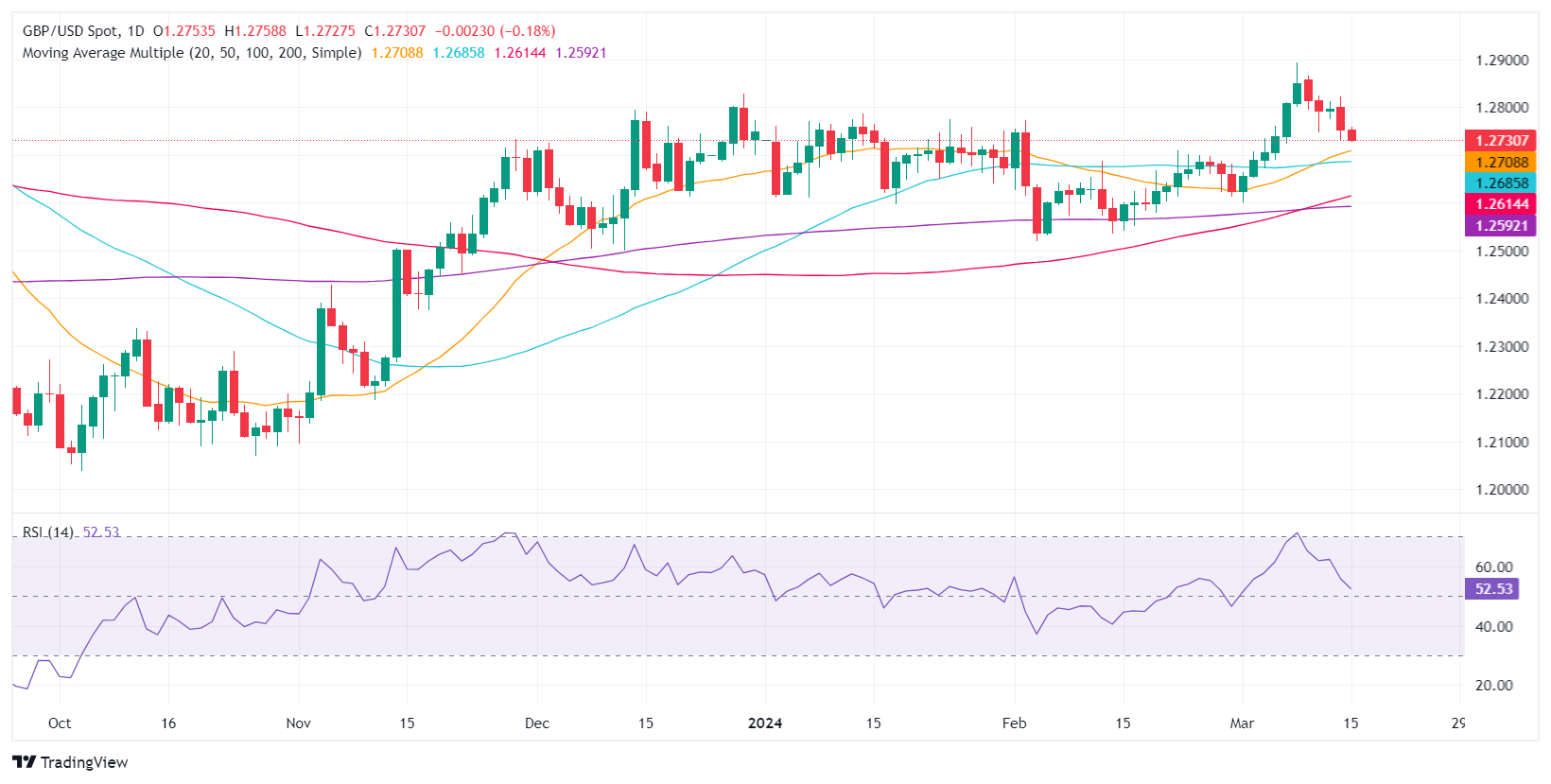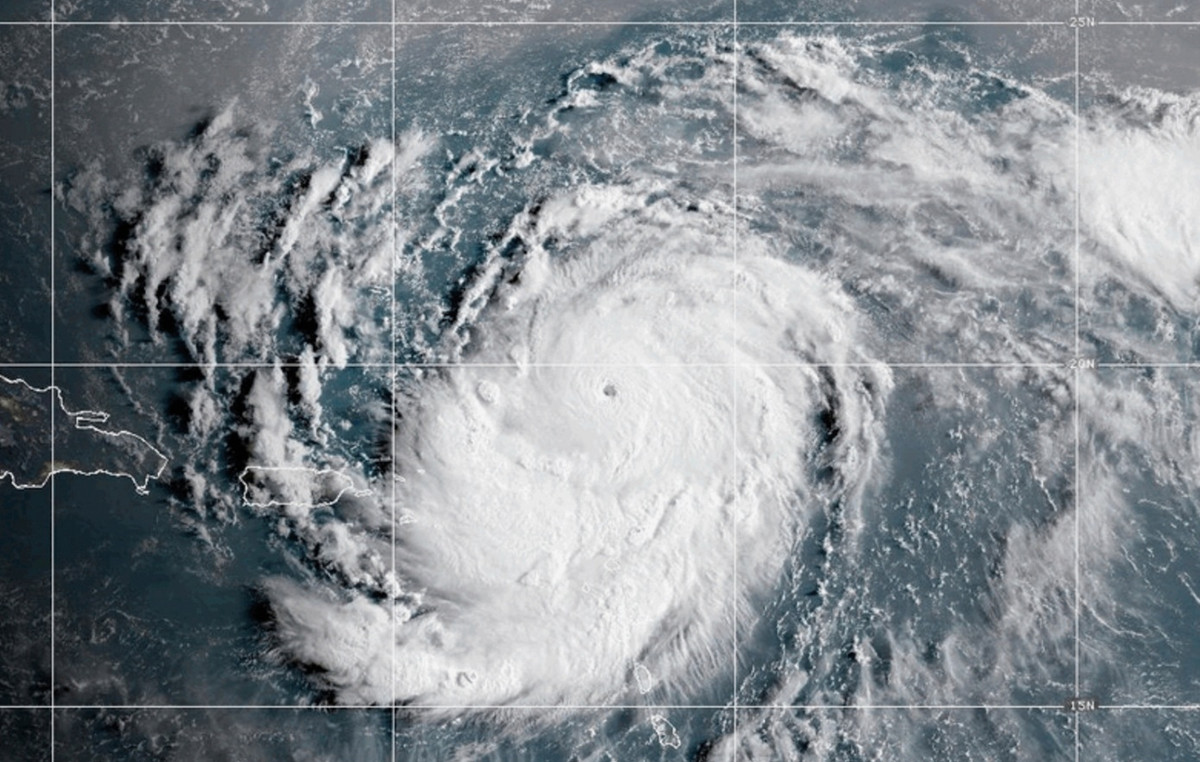- GBP/USD falls as US retail sales and inflation data reinforce a less dovish outlook from the Fed.
- Industrial production in the US shows signs of recovery, which contributes to the resistance of the Dollar.
- UK labor market report weighs on BoE rate cut speculation, with focus on June monetary policy.
- Markets are gearing up for next week's Fed and BoE meetings, where inflation data will weigh on GBP/USD.
The British Pound will end the week with losses, although it extends its bearish trend for two consecutive days after breaching the 1.2800 zone. The GBP/USD pair trades at 1.2731, registering losses of 0.16%.
GBP/USD retreats below 1.2800, exposing critical support levels after US inflation spike
The dollar maintains its bullish trend, while traders reduce their bets on a dovish Federal Reserve. The US Department of Labor released consumer and manufacturing inflation data for February, with figures suggesting that prices remain elevated, unable to break below the 3% threshold. Meanwhile, the strong retail sales report missed estimates but showed improvement compared to the previous month's reading.
Today, the US economic agenda showed that industrial production rebounded in February, ending two consecutive months of deterioration. Manufacturing production stood at 0.1% month-over-month, compared to the -0.5% contraction in January, and exceeded the consensus, according to data revealed by the Fed. Recently, the University of Michigan's consumer sentiment reading Preliminary reading was 76.5, below estimates and the previous reading of 76.9. Americans expect inflation to remain at 3% in the 12 months starting in March and at 2.9% in five years.
On the other hand, an unfavorable labor market report weakened Cable. The rise in the unemployment rate and the fall in average earnings without bonuses, a measure of wage inflation, fell from 6.2% to 6.1%. The data prompted increased bets in markets on a Bank of England (BoE) rate cut in June.
Meanwhile, traders are preparing for next week's Fed and BoE monetary policy decisions. The consensus expects both institutions to keep rates unchanged, although any dovish signs could trigger a reaction from financial markets. Traders will also be attentive to the publication of inflation figures in the United Kingdom
GBP/USD Price Analysis: Technical Outlook
GBP/USD buyers failed to hold on to gains above 1.2800, exacerbating a drop below the last cycle high at 1.2827, exacerbating a pullback below the 1.2800 handles. That said, key support levels were exposed, such as the 50-day moving average (DMA) at 1.2685, followed by the next cycle low seen at the March 1 low at 1.2599. Once these levels are broken, the confluence of the 100 and 200 DMAs around 1.2589/1.2601 would be next.

Pound Sterling FAQ
What is the Pound Sterling?
The British Pound (GBP) is the oldest currency in the world (886 AD) and the official currency of the United Kingdom. It is the fourth most traded currency unit in the world, with 12% of all transactions and an average of $630 billion per day, according to 2022 data.
Its key currency pairs are GBP/USD, also known as “Cable”, which represents 11% of the forex market, GBP/JPY, or the “Dragon” as it is known to traders (3%), and EUR/GBP (2%). The pound sterling is issued by the Bank of England (BoE).
How do Bank of England decisions influence the Pound Sterling?
The most important factor influencing the value of the Pound Sterling is the monetary policy decided by the Bank of England. The Bank of England bases its decisions on achieving its main objective of “price stability”, that is, a stable inflation rate of around 2%. Its main tool to achieve this is the adjustment of interest rates.
When inflation is too high, the Bank of England tries to contain it by raising interest rates, which makes access to credit more expensive for individuals and companies. This tends to be positive for the GBP, as higher interest rates make the UK a more attractive place for global investors to park their money.
When inflation is too low, it is a sign that economic growth is slowing. In this scenario, the BoE will consider lowering interest rates to make credit cheaper, so that companies borrow more to invest in projects that generate growth.
How does economic data influence the value of the Pound?
The published data gauges the health of the economy and may influence the value of the Pound sterling. Indicators such as GDP, manufacturing and services PMIs, and employment can influence the direction of the Pound.
A strong economy is good for the British pound. Not only does it attract more foreign investment, but it may encourage the Bank of England to raise interest rates, which will directly strengthen the Pound. Otherwise, if economic data is weak, the pound is likely to fall.
How does the trade balance affect the Pound?
Another significant data for the pound sterling is the trade balance. This indicator measures the difference between what a country earns from its exports and what it spends on imports during a given period.
If a country produces highly sought-after exports, its currency will benefit exclusively from the additional demand created by foreign buyers wishing to purchase these goods. Therefore, a positive net trade balance strengthens a currency and vice versa for a negative balance.
Source: Fx Street
I am Joshua Winder, a senior-level journalist and editor at World Stock Market. I specialize in covering news related to the stock market and economic trends. With more than 8 years of experience in this field, I have become an expert in financial reporting.




.jpg)


